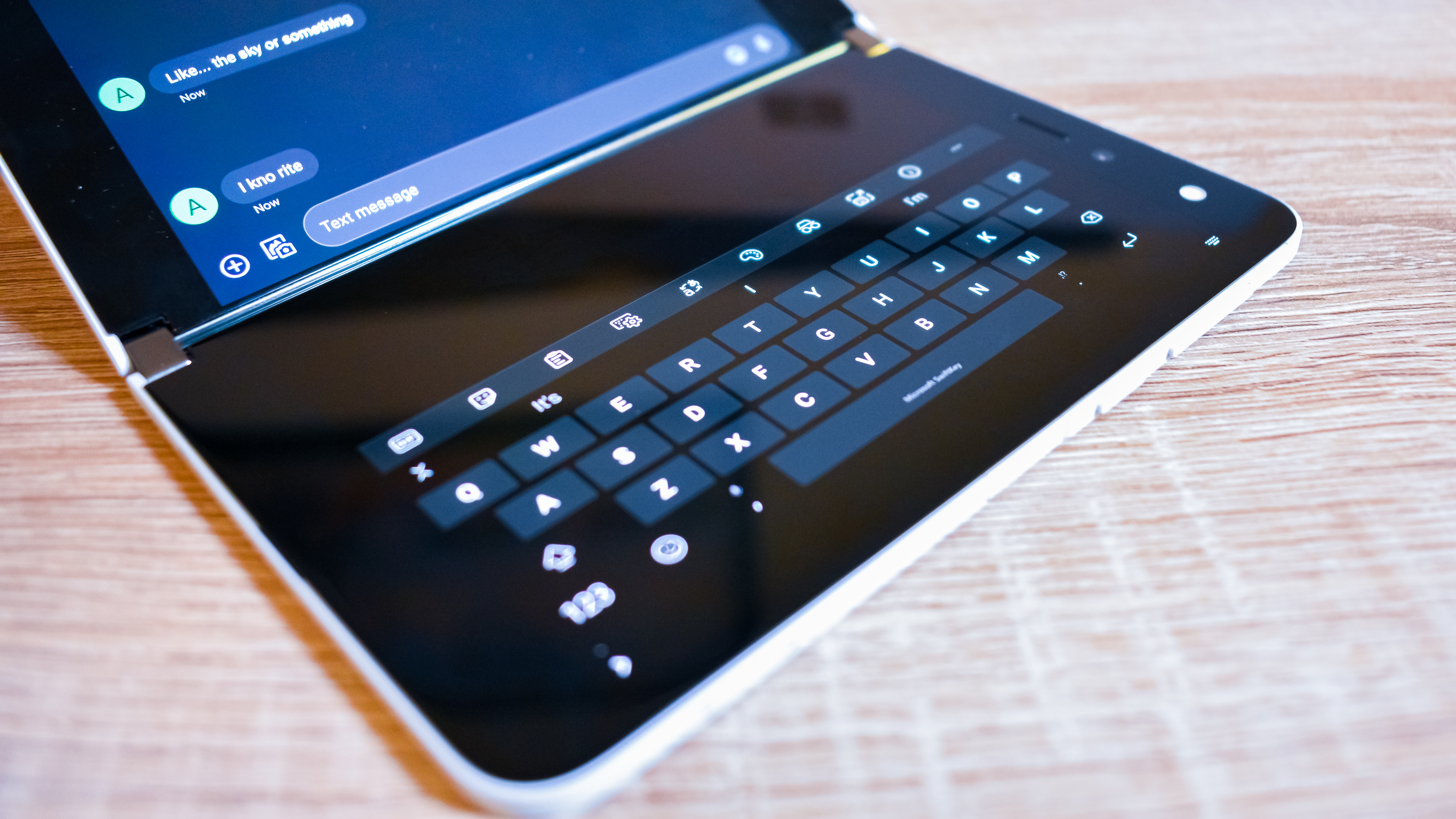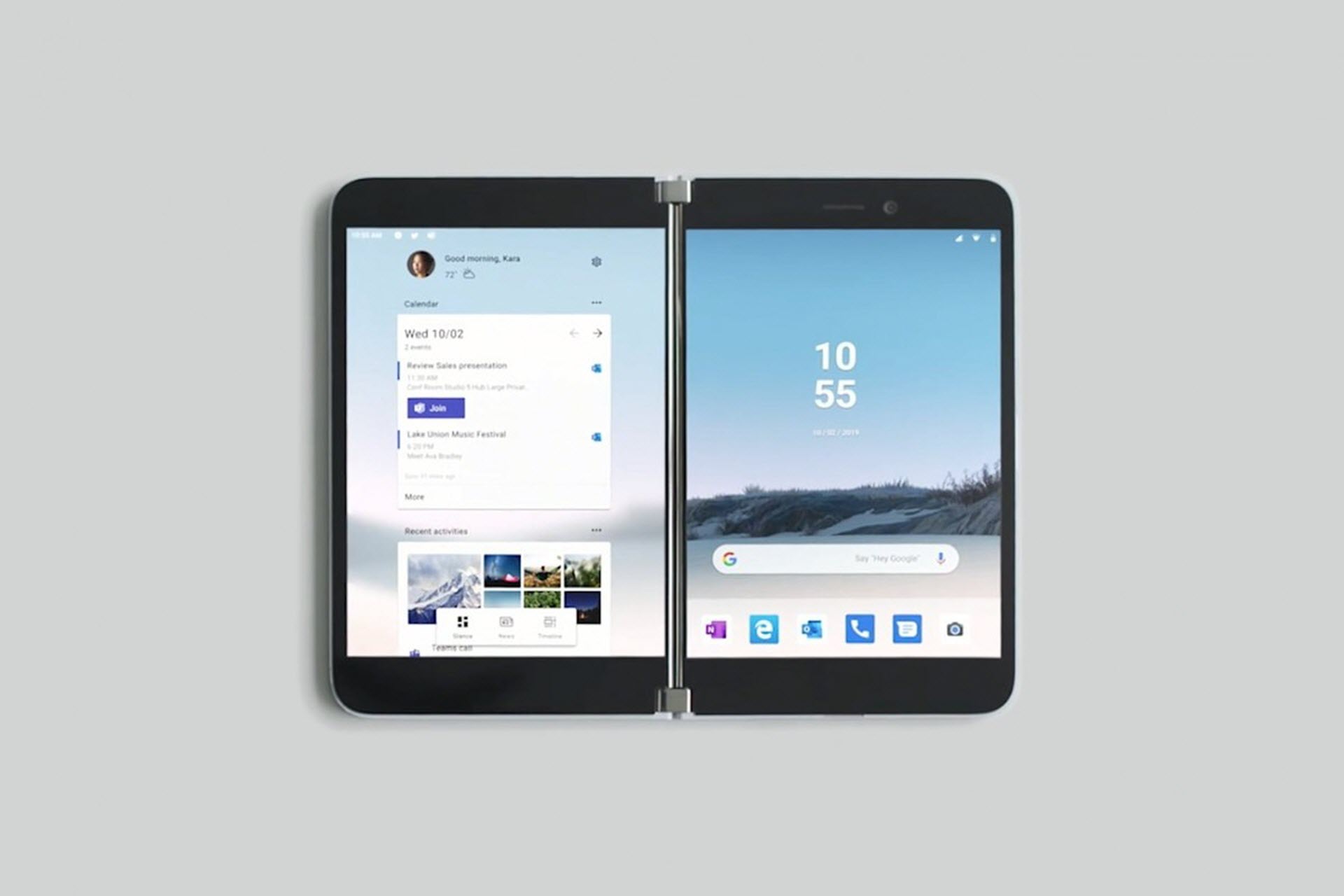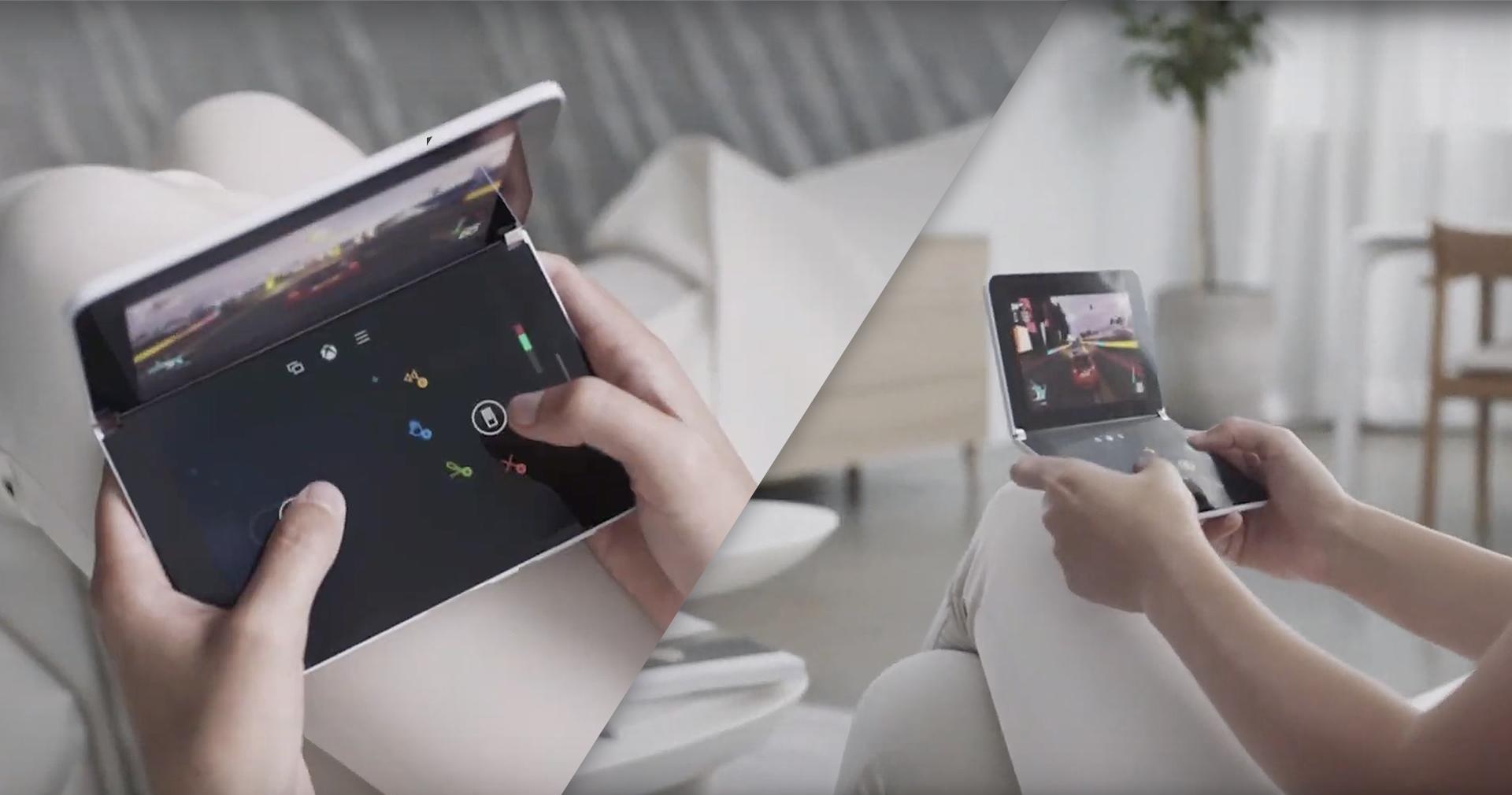

The table tent mode is great for watching several hours of Netflix. But that posture means you lose a lot of what makes the Duo special, which is having two active screens. I ended up using the Duo folded all the way back most of the time, as a 5.6-inch, 5-by-4 phablet that's really the only way you can comfortably hold it in one hand and operate it with the other. Like a Lenovo Yoga notebook (specifically, the Yoga Book), the Duo folds open a little bit, halfway, into a tent shape, or all the way back, and stays that way.
#Microsoft surface duo 2 t mobile windows#
No phone ever before has been able to do the full-rotation hinge trick that we see on Windows 2-in-1s. Some aspects of the Duo's hardware are otherworldly. The ergonomics of the Duo-where you either type with one thumb while holding the other half of the device with your other hand, or where you stretch both thumbs across a slightly too wide, folded device-don't help. Now, I've never found touch-screen keyboards to be great for long, in-depth work they're a little confusing and tiring on the fingers. Maybe this is just about reprogramming my muscle memory, but I kept falling back to my laptop to do complicated work. But because you're holding the Duo with both hands, and it's a little large, there's a lot of thumb stretching and repositioning of hands and fingers to get from the tops to the bottoms of the screens. When you're operating multiple windows on a PC, moving between them involves a twitch of the wrist, at most. The two screens can show two different web pagesīear with me here. But something doesn't quite come together, and I think it's a physical thing.
#Microsoft surface duo 2 t mobile how to#
It's obvious, from the actual form of the device, how to open an app on each screen, and even the drag-and-drop or drag-and-span gestures of moving apps around is much more obvious than it is on Android or iOS. The Duo makes the virtual physical, with its two screens. iPads and Android tablets can split into virtual windows, but they use systems of unintuitive and often buggy gestures that lead relatively few people to use them, outside of product demos. But none of the major mobile operating systems have figured out a multitasking interface as simple and smooth as the 40-year-old windowing system we use on PCs. My daughter, an artist, draws while texting her friends.

My wife, a teacher, does Zoom classes while looking at reference material.

I write articles while referring to spec sheets. In 2020, lives and workflows are built around multitasking. The outside of the Surface Duo has no screen The Multitasking Phone The screens are tough, far more durable than the Z Fold's tender internal display, but still, that feels daring. If you do want quick access, you'll have to fold it with both screens facing out, which feels dangerous. That's fine if you don't intend to whip out the device and just start using it. When the phone is closed it's protected, but unusable. The device really wants you to do two things on the two screens. But the fact that there's a gap between the screens makes a big, spanning window feel unsatisfying. You can span the two displays inside to make an 8.1-inch screen with about 30.8 square inches of pixels, slightly more than the 30 square inches on the Z Fold 2's 7.6-inch screen. They seem even sharper than their 401ppi resolution suggests. The screens are each 1,800 by 1,350 pixels together they're 2,700 by 1,800. The Surface Duo (outside) is considerably wider than the Galaxy Z Fold 2 (inside) Each 5.6-inch screen, with 15.4 square inches of room, is bigger than the Z Fold 2's 6.2-inch exterior screen, which is 14.25 square inches of pixels. That makes the Duo a 5.7-by-3.7-inch (HW), super-wide hand-buster when folded back, but it's good for reading books and looking at web pages, and it means the 5.6-inch screens bat above their weight in terms of square inches. The two 5.6-inch screens are in a wider 5-by-4 aspect ratio than we're used to from phones nowadays. It isn't quite a case, but you absolutely want to put it on it not only cushions the Duo on drops, it gives the edges a grip so they don't slide around when it's semi folded like a tent. The Duo comes with an adhesive rubber bumper that sticks to the edges of the device to protect it.


 0 kommentar(er)
0 kommentar(er)
